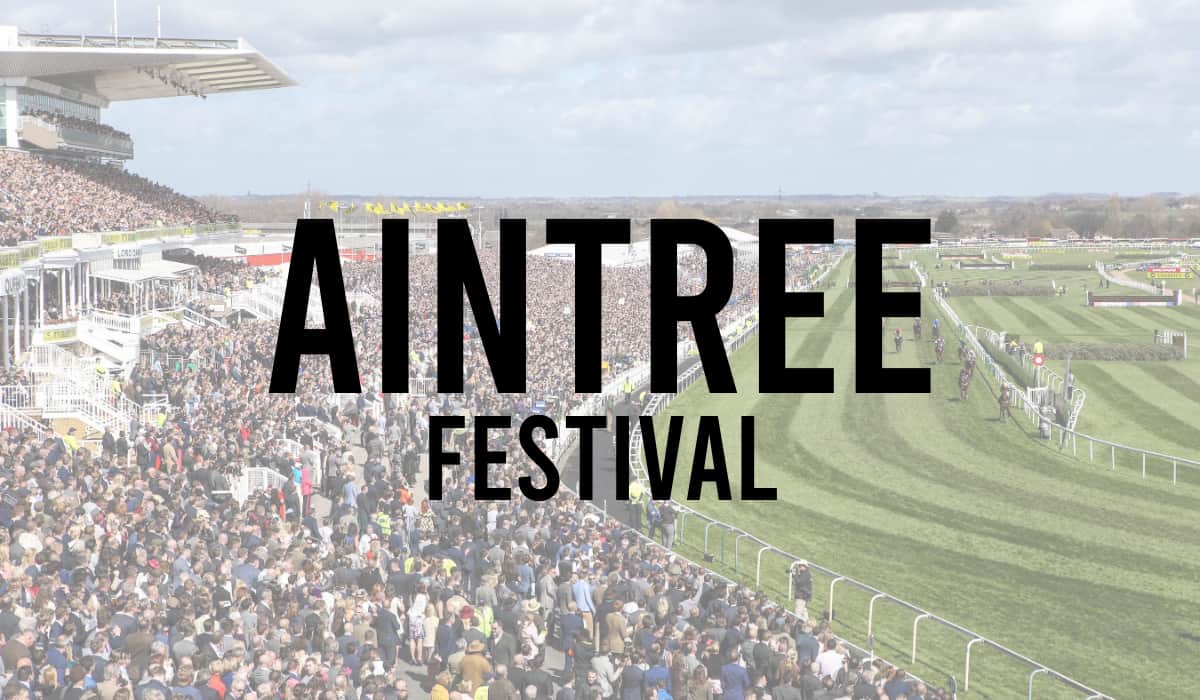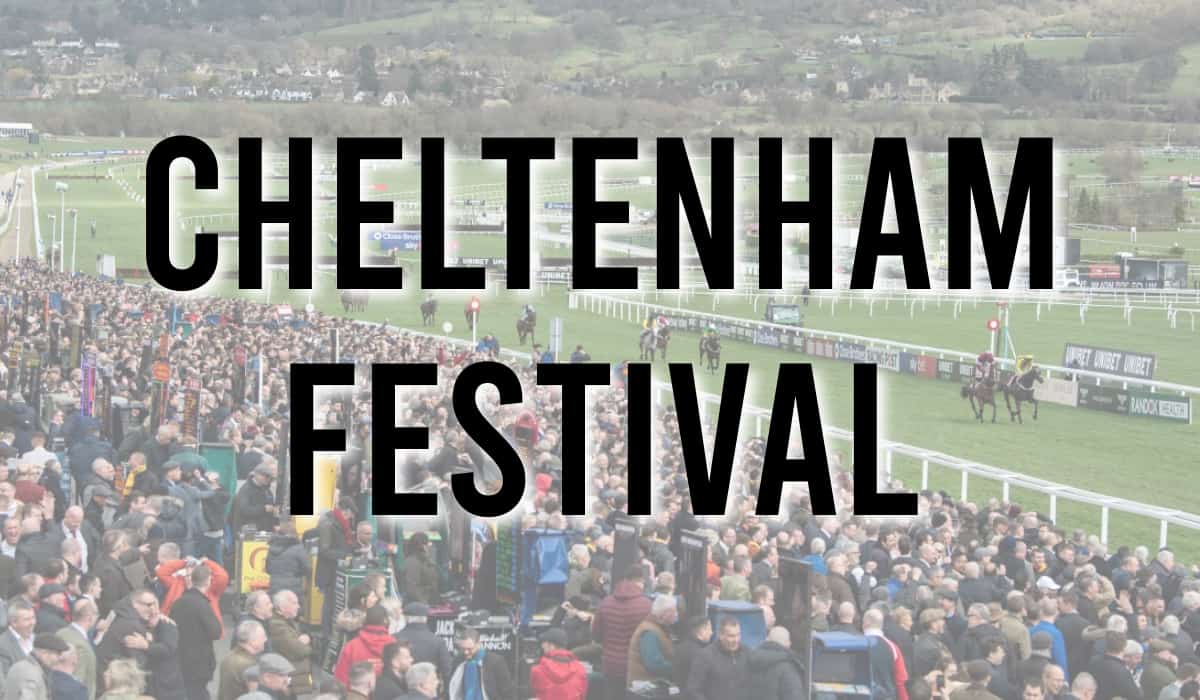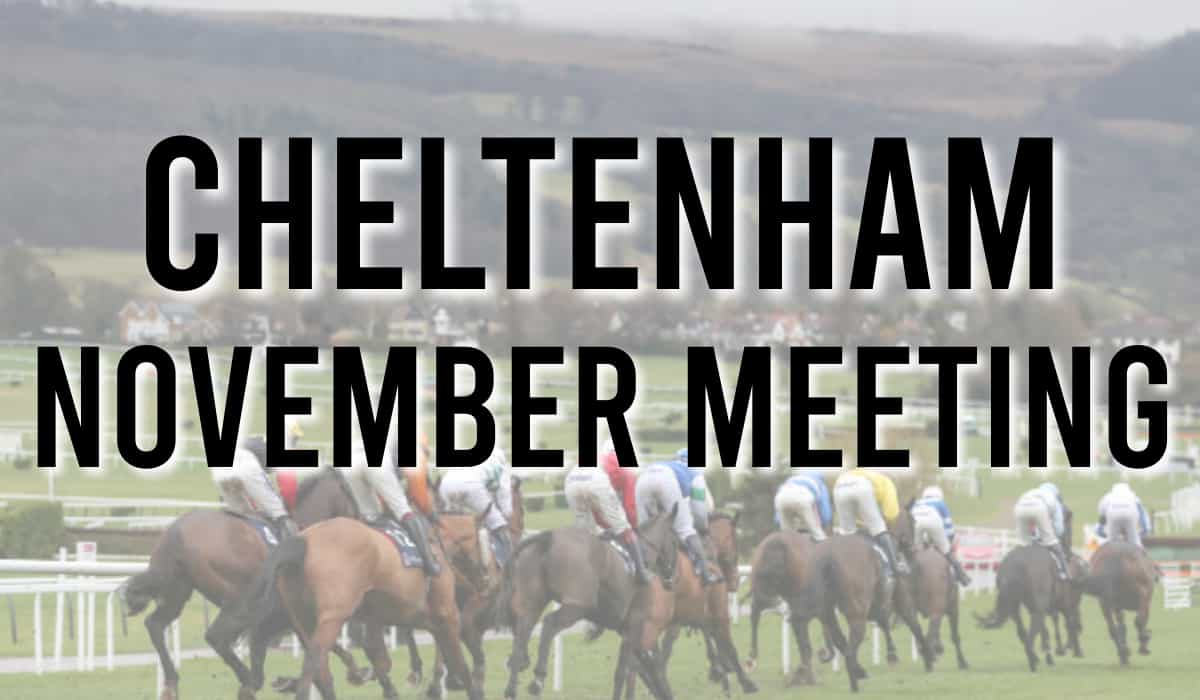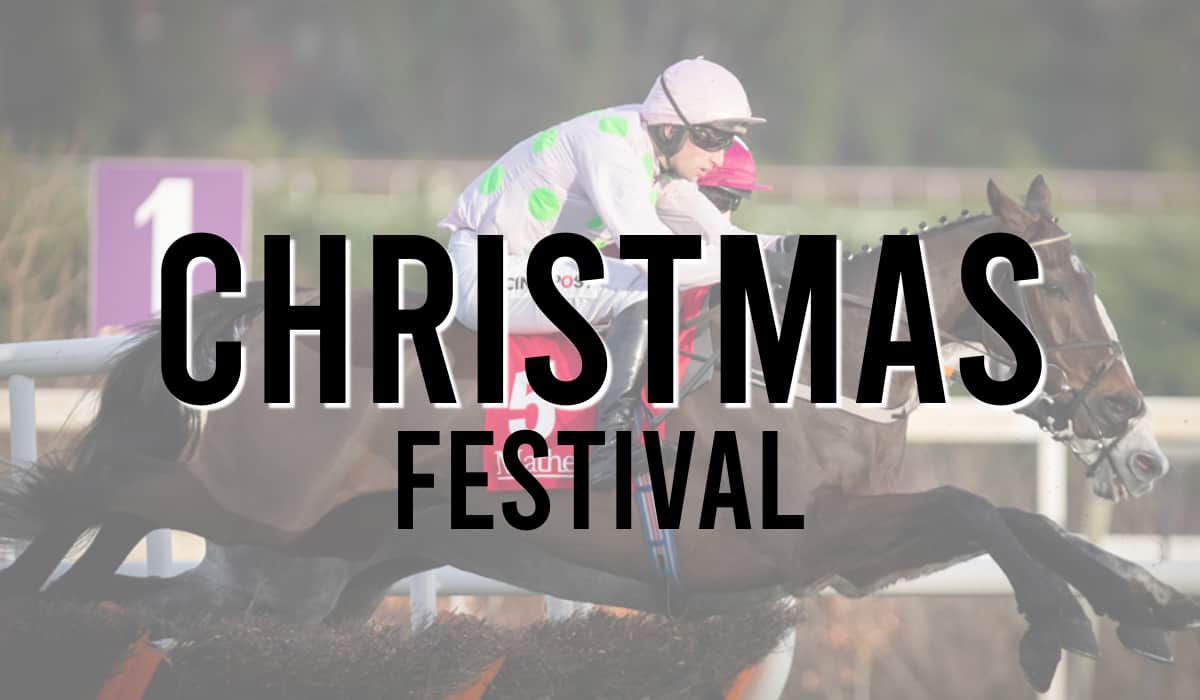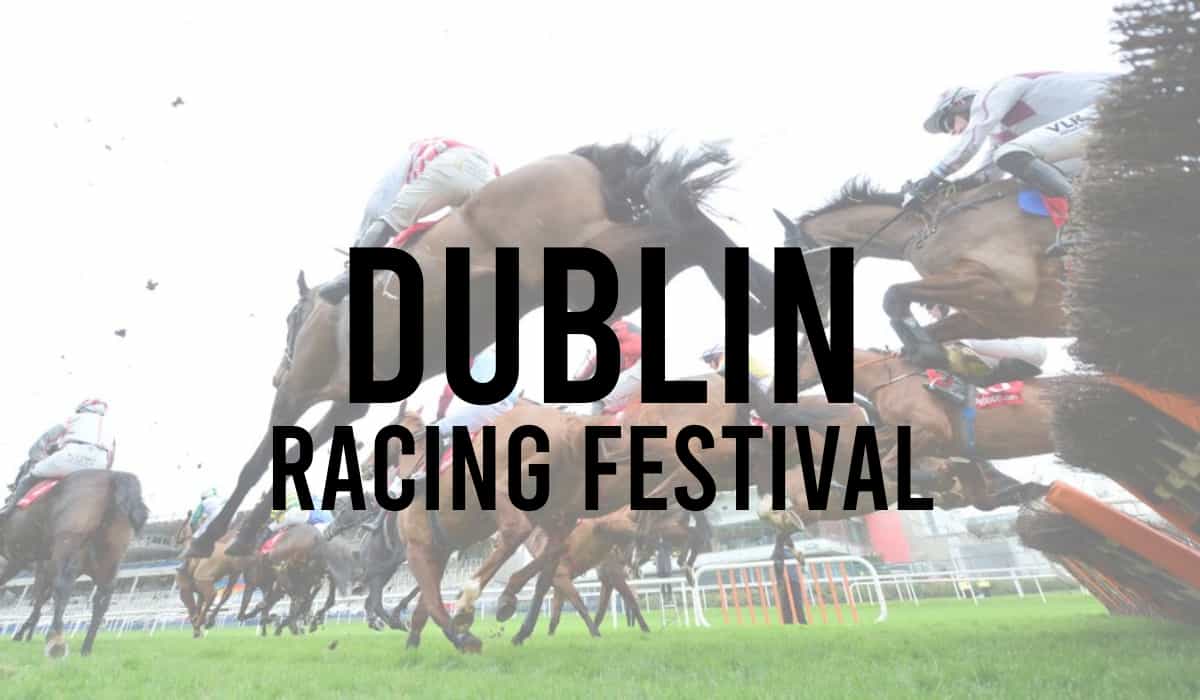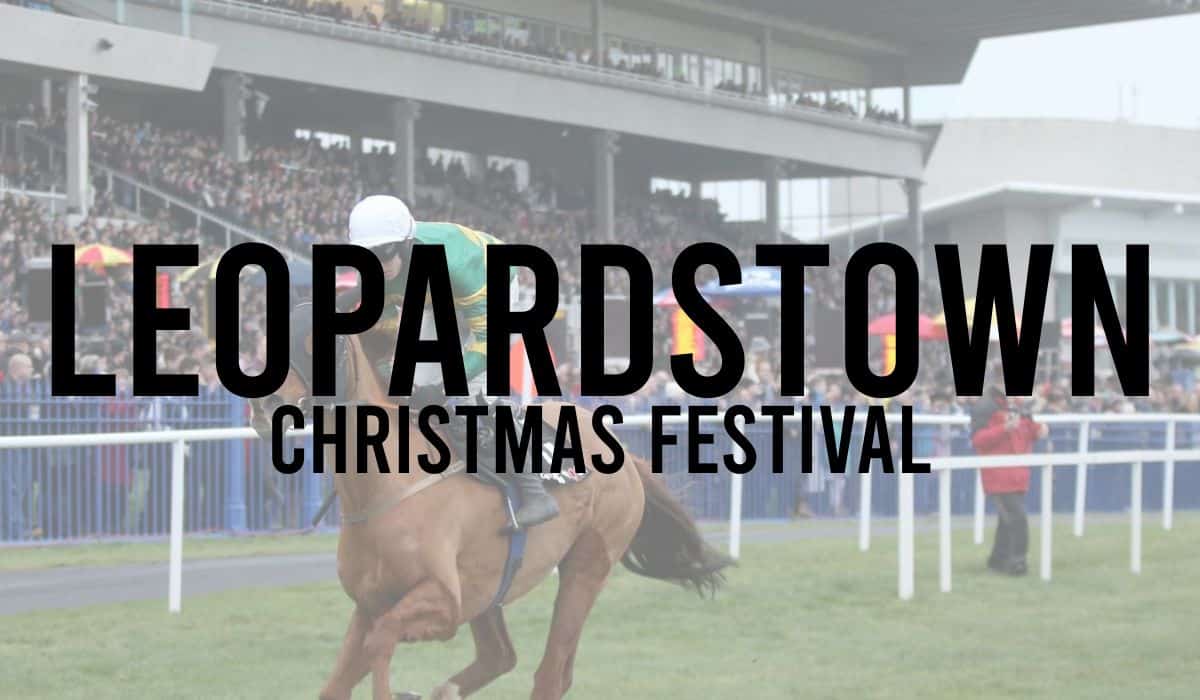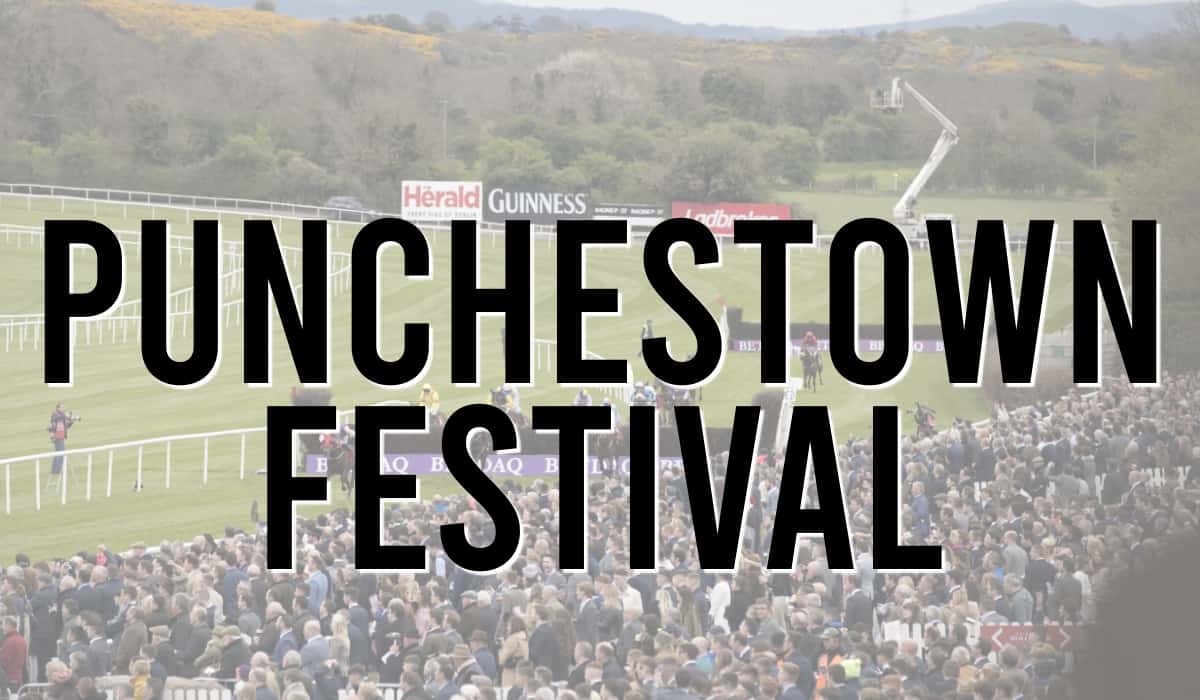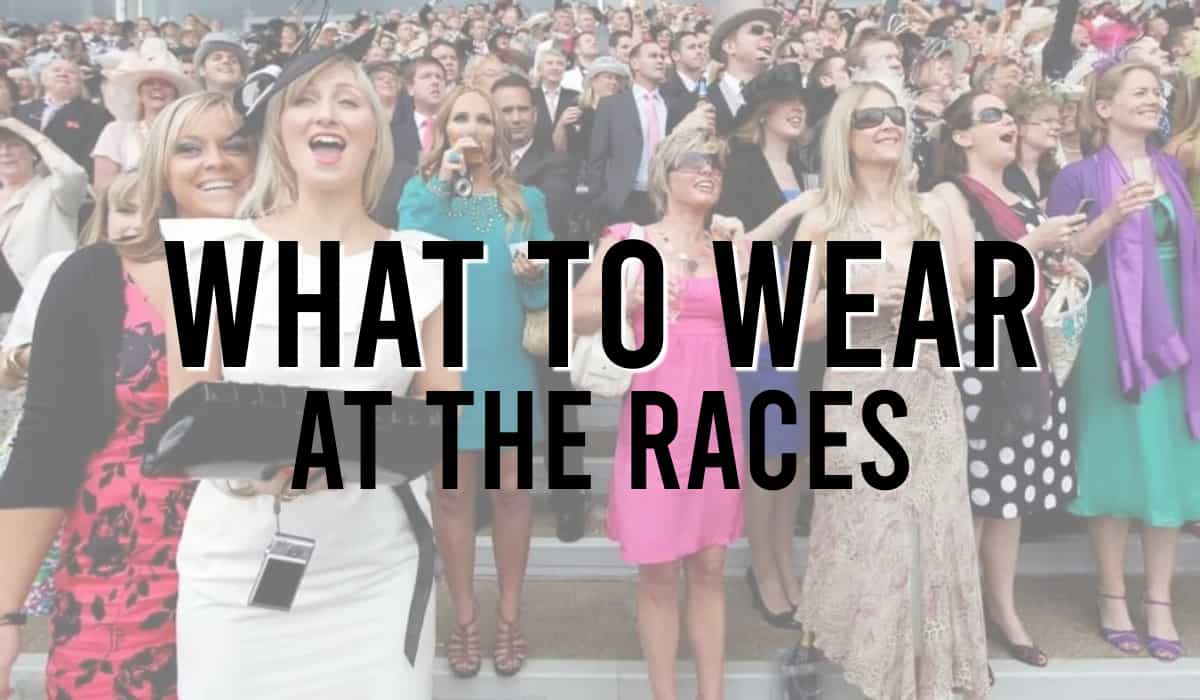Welcome to our gudie to national hunt racing.
If you are looking for the best National Hunt jump horse racing events we have you covered. Check out the full list of National Hunt fixtures in 2024.
Horse racing with jumps holds some of the biggest horse racing events in the world. It gets its name from the days when races were run from church steeple to church steeple in the English and Irish countryside – hence the name Steeplechase! This form of racing has a long history.
In National Hunt racing, commonly known as jumps racing, racehorses are required to jump obstacles over distances ranging from two miles to more than four and a quarter miles.
The two main types of National Hunt jump racing are hurdles and fences. The hurdle races are smaller obstacles and horses usually start hurdling before taking on the larger obstacle fences (chasing events).
With some of the most exciting horse racing festivals like the Cheltenham Festival, Aintree Festival held at the famous Aintree Racecourse and Punchestown Festival it is no surprise horse racing fans are researching the jump racing calendar.
In our National Hunt Season guide, we explain when the jump season starts and when the jump season ends with every horse racing jumps events listed.
Find out more about jump racing:
Contents
- 1 National Hunt Racing in the UK
- 2 What Are The Best National Hunt Racing and Jumps Meeting?
- 3 When is the National Hunt Season for Horse Racing with Jumps?
- 4 British Grade 1 National Hunt Races – Jump Racing
- 5 British Grade 2 National Hunt Races – Jump Racing
- 6 British Grade 3 National Hunt Races – Jumps Horse Racing
- 7 Irish Grade 1 National Hunt Races – Jumps Races
- 8 Irish Grade 2 National Hunt Races – Jumps Races
- 9 Irish Grade 3 National Hunt Races – Jumps Races
- 10 What Is National Hunt Racing?
- 11 Classification of Horse Racing With Jumps
- 12 Popular Questions
- 13 Graded Races
- 14 Steeplechase Races
- 15 Hurdle Races
- 16 Jump Racing Handicaps
- 17 National Hunt Novice Races
- 18 National Hunt Flat or Bumper races
- 19 Summary of National Hunt Racing Events
- 20 Jump Racing Festivals
- 21 Searches Associated With National Hunt Racing and Jump Racing
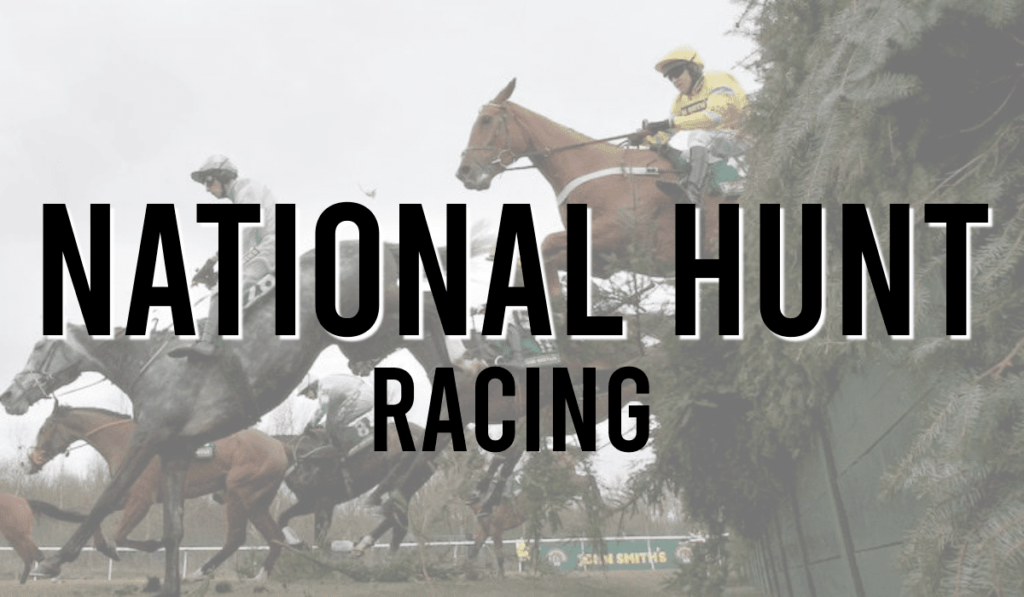
National Hunt Racing in the UK
Throughout the winter months, the flat season takes a break (apart from all-weather racing) and jump racing takes place and takes centre stage.
Check out our comprehensive guides on the National Hunt Jump Racing Events.
Whilst flat racing is often referred to as The Sport of Kings, jumps racing is called The Sport of Farmers, down to its connection with rural communities.
Jumps racing is hugely popular, mainly because many of the horses return year after year and they become favourites. Often National Hunt horses have much longer careers and therefore build up more of a following – check out our Hennessey Gold Cup winners to see some great examples.
There are some National Hunt flat races, normally these are the last races on a jump racing card, and these are typically for younger horses in the jumps world.
National hunt racing mainly happens in the winter and spring months, from Oct to Apr, although there are some popular summer jumping fixtures, these are a relatively new addition.
Cheltenham is the home of jump racing, whilst other major racecourses which hold meetings include Aintree, Newbury, Wetherby and Sandown.
What Are The Best National Hunt Racing and Jumps Meeting?
There are so many great races and fixtures to choose from but our favourite national hunt races which take place throughout the year are:
- The Cheltenham Gold Cup
- The King George at Kempton Park
- The Grand National
- The Champion Hurdle
- Queen Mother Champion Chase
- The Welsh Grand National
- The Stayers Hurdle
- Bet365 Gold Cup
- The Arkle
- Coral Gold Cup
When is the National Hunt Season for Horse Racing with Jumps?
The National Hunt season in Great Britain officially commences on May 1st and continues until late April the following year.
The National Hunt jumps season is split into two periods of time:
Summer Jumping 2024
The National Hunt summer jumping season runs from May until September.
It is a mixture of hurdle, steeplechase races and bumper races.
Winter Jumping 2024
The National Hunt winter jumping season runs from October until April, again it is a mixture of hurdle and steeplechase races.
The winter jumping season generally has the higher-rated horses running because the more prestigious fixtures and races occur. This is also due to the ground conditions being softer and more favourable to most horse racing trainers.
The winter jumping season builds up towards the end of the year when the major national hunt festivals take place:
- March – Cheltenham Festival – held annually
- April – Aintree Festival – held annually
- May – Punchestown Festival – held annually
British Grade 1 National Hunt Races – Jump Racing
Here is a list of all the notable Grade One National Hunt horse races which take place annually in Great Britain, under the authority of the British Horseracing Authority.
- Betfair Chase at Haydock Racecourse
- Fighting Fifth Hurdle at Newcastle Racecourse
- Henry VIII Novices’ Chase at Sandown Racecourse
- Tingle Creek Chase at Sandown Racecourse
- Long Walk Hurdle at Ascot Racecourse
- Kauto Star Novices’ Chase at Kempton Racecourse
- Christmas Hurdle at Kempton Racecourse
- King George VI Chase at Kempton Racecourse
- Finale Juvenile Hurdle at Chepstow Racecourse
- Challow Novices’ Hurdle at Newbury Racecourse
- Tolworth Novices’ Hurdle at Sandown Racecourse
- Clarence House Chase at Ascot Racecourse
- Scilly Isles Novices’ Chase at Sandown Racecourse
- Ascot Chase at Ascot Racecourse
- Supreme Novices’ Hurdle at Cheltenham Racecourse
- Arkle Challenge Trophy at Cheltenham Racecourse
- Champion Hurdle at Cheltenham Racecourse
- Close Brothers Mares’ Hurdle at Cheltenham Racecourse
- Ballymore Novices’ Hurdle at Cheltenham Racecourse
- Brown Advisory Novices’ Chase at Cheltenham Racecourse
- Queen Mother Champion Chase at Cheltenham Racecourse
- Champion Bumper at Cheltenham Racecourse
- Turners Novices’ Chase at Cheltenham Racecourse
- Ryanair Chase at Cheltenham Racecourse
- Stayers’ Hurdle at Cheltenham Racecourse
- Triumph Hurdle at Cheltenham Racecourse
- Albert Bartlett Novices’ Hurdle at Cheltenham Racecourse
- Cheltenham Gold Cup at Cheltenham Racecourse
- Manifesto Novices’ Chase at Aintree Racecourse
- Anniversary 4-Y-O Novices’ Hurdle at Aintree Racecourse
- Betway Bowl at Aintree Racecourse
- Aintree Hurdle at Aintree Racecourse
- Top Novices’ Hurdle at Aintree Racecourse
- Mildmay Novices’ Chase at Aintree Racecourse
- Melling Chase at Aintree Racecourse
- Sefton Novices’ Hurdle at Aintree Racecourse
- Mersey Novices’ Hurdle at Aintree Racecourse
- Maghull Novices’ Chase at Aintree Racecourse
- Liverpool Hurdle at Aintree Racecourse
- Celebration Chase at Sandown Racecourse
The above are the biggest jump races in the National Hunt calendar with the best prize money – hurdle, bumper races and steeplechase racing.
British Grade 2 National Hunt Races – Jump Racing
Here is a list of all the notable Grade Two National Hunt horse races which take place annually in Great Britain, under the authority of the British Horseracing Authority (the UK governing body).
- Persian War Novices’ Hurdle at Chepstow Racecourse
- Old Roan Chase at Aintree Racecourse
- West Yorkshire Hurdle at Wetherby Racecourse
- Charlie Hall Chase at Wetherby Racecourse
- Haldon Gold Cup at Exeter Racecourse
- Rising Stars Novices’ Chase at Wincanton Racecourse
- Elite Hurdle at Wincanton Racecourse
- Hyde Novices’ Hurdle at Cheltenham Racecourse
- Prestbury Juvenile Novices’ Hurdle at Cheltenham Racecourse
- November Novices’ Chase at Cheltenham Racecourse
- Shloer Chase at Cheltenham Racecourse
- Sharp Novices’ Hurdle at Cheltenham Racecourse
- 1965 Chase at Ascot Racecourse
- Ascot Hurdle at Ascot Racecourse
- Berkshire Novices’ Chase at Newbury Racecourse
- Long Distance Hurdle at Newbury Racecourse
- John Francome Novices’ Chase at Newbury Racecourse
- Winter Novices’ Hurdle at Sandown Racecourse
- Many Clouds Chase at Aintree Racecourse
- Peterborough Chase at Huntingdon Racecourse
- Bristol Novices’ Hurdle at Cheltenham Racecourse
- December Novices’ Chase at Doncaster Racecourse
- Summit Juvenile Hurdle at Doncaster Racecourse
- International Hurdle at Cheltenham Racecourse
- Noel Novices’ Chase at Ascot Racecourse
- Kennel Gate Novices’ Hurdle at Ascot Racecourse
- Wayward Lad Novices’ Chase at Kempton Racecourse
- Desert Orchid Chase at Kempton Racecourse
- Dipper Novices’ Chase at Cheltenham Racecourse
- Relkeel Hurdle at Cheltenham Racecourse
- Hampton Novices’ Chase at Warwick Racecourse
- Leamington Novices’ Hurdle at Warwick Racecourse
- Silviniaco Conti Chase at Kempton Racecourse
- Warfield Mares’ Hurdle at Ascot Racecourse
- Rossington Main Novices’ Hurdle at Haydock Racecourse
- Altcar Novices’ Chase at Haydock Racecourse
- Champion Hurdle Trial at Haydock Racecourse
- Peter Marsh Chase at Haydock Racecourse
- Finesse Juvenile Novices’ Hurdle at Cheltenham Racecourse
- Cotswold Chase at Cheltenham Racecourse
- Classic Novices’ Hurdle at Cheltenham Racecourse
- Cleeve Hurdle at Cheltenham Racecourse
- River Don Novices’ Hurdle at Doncaster Racecourse
- Lightning Novices’ Chase at Doncaster Racecourse
- Yorkshire Rose Mares’ Hurdle at Doncaster Racecourse
- Towton Novices’ Chase at Wetherby Racecourse
- Kingmaker Novices’ Chase at Warwick Racecourse
- Denman Chase at Newbury Racecourse
- Game Spirit Chase at Newbury Racecourse
- Winter Bumper at Newbury Racecourse
- Jane Seymour Mares’ Novices’ Hurdle at Sandown Racecourse
- Reynoldstown Novices’ Chase at Ascot Racecourse
- Rendlesham Hurdle at Haydock Racecourse
- Prestige Novices’ Hurdle at Haydock Racecourse
- Kingwell Hurdle at Wincanton Racecourse
- Adonis Juvenile Novices’ Hurdle at Kempton Racecourse
- Pendil Novices’ Chase at Kempton Racecourse
- Dovecote Novices’ Hurdle at Kempton Racecourse
- National Spirit Hurdle at Fontwell Racecourse
- Premier Kelso Hurdle at Kelso Racecourse
- National Hunt Chase Challenge Cup at Cheltenham Racecourse
- Dawn Run Mares’ Novices’ Hurdle at Cheltenham Racecourse
- Mrs Paddy Power Mares’ Chase at Cheltenham Racecourse
- Mares’ Novices’ Hurdle Finale at Newbury Racecourse
- Nickel Coin Mares’ Standard Open NH Flat Race at Aintree Racecourse
- Champion Standard Open NH Flat Race at Aintree Racecourse
- Silver Trophy Chase at Cheltenham Racecourse
- Future Champion Novices’ Chase at Ayr Racecourse
- Scottish Champion Hurdle at Ayr Racecourse
- Oaksey Chase at Sandown Racecourse
- Bet365 Select Hurdle at Sandown Racecourse
All of the above jumps race events are very competitive.
British Grade 3 National Hunt Races – Jumps Horse Racing
Here is a list of all the notable Grade Three National Hunt horse races which take place annually in Great Britain, under the authority of the British Horseracing Authority.
- Swinton Handicap Hurdle at Haydock Racecourse
- Summer Plate at Market Rasen Racecourse
- Silver Trophy Handicap Hurdle at Chepstow Racecourse
- Sodexo Gold Cup at Ascot Racecourse
- Paddy Power Gold Cup at Cheltenham Racecourse
- Jewson Click And Collect Handicap Chase at Cheltenham Racecourse
- Greatwood Hurdle at Cheltenham Racecourse
- Betfair Stayers’ Handicap Hurdle at Haydock Park Racecourse
- Coral Gold Cup at Newbury Racecourse
- Becher Chase at Aintree Racecourse
- Betfair Handicap Chase at Cheltenham Racecourse
- Racing Post Gold Cup at Cheltenham Racecourse
- Betfair Exchange Trophy Handicap Hurdle at Ascot Racecourse
- Rowland Meyrick Handicap Chase at Wetherby Racecourse
- Welsh Grand National at Chepstow Racecourse
- Paddy Power Handicap Chase at Cheltenham Racecourse
- Classic Chase at Warwick Racecourse
- Holloway’s Hurdle at Ascot Racecourse
- Spectra Cyber Security Solutions Trophy Hcap Chase at Cheltenham Racecourse
- Heroes Handicap Hurdle at Sandown Racecourse
- Betfair Hurdle at Newbury Racecourse
- Grand National Trial at Haydock Racecourse
- Coral Trophy Handicap Chase at Kempton Racecourse
- Greatwood Gold Cup at Newbury Racecourse
- EBF Novices’ Handicap Hurdle at Sandown Racecourse
- Imperial Cup at Sandown Racecourse
- Ultima Handicap Chase at Cheltenham Racecourse
- Boodles Juvenile Handicap Hurdle at Cheltenham Racecourse
- Coral Cup at Cheltenham Racecourse
- Johnny Henderson Grand Annual Chase at Cheltenham Racecourse
- Pertemps Final at Cheltenham Racecourse
- Paddy Power Plate Handicap Chase at Cheltenham Racecourse
- County Handicap Hurdle at Cheltenham Racecourse
- Red Rum Handicap Chase at Aintree Racecourse
- 20 Years Together, Alder Hey & Aintree Hcp Hdl at Aintree Racecourse
- Topham Chase at Aintree Racecourse
- EFT Construction Handicap Hurdle at Aintree Racecourse
- Betway Handicap Chase at Aintree Racecourse
- Grand National at Aintree Racecourse
- Junior Jumpers Membership Fillies’ Juv Hcp Hdl at Cheltenham Racecourse
- Scottish Grand National at Ayr Racecourse
- Bet365 Gold Cup at Sandown Racecourse
Irish Grade 1 National Hunt Races – Jumps Races
Here is a list of all the notable Grade One National Hunt horse races which take place annually in Ireland, under the authority of Horse Racing Ireland (the official racing industry body of Ireland):
- Ladbrokes Champion Chase at Down Royal Racecourse
- Morgiana Hurdle at Punchestown Racecourse
- Royal Bond Novice Hurdle at Fairyhouse Racecourse
- Drinmore Novice Chase at Fairyhouse Racecourse
- Hatton’s Grace Hurdle at Fairyhouse Racecourse
- John Durkan Memorial Punchestown Chase at Punchestown Racecourse
- Racing Post Novice Chase at Leopardstown Racecourse
- Faugheen Novice Chase at Limerick Racecourse
- Paddy’s Reward Club Chase at Leopardstown Racecourse
- Future Champions Novice Hurdle at Leopardstown Racecourse
- Christmas Hurdle at Leopardstown Racecourse
- Savills Chase at Leopardstown Racecourse
- Matheson Hurdle at Leopardstown Racecourse
- Neville Hotels Novice Chase at Leopardstown Racecourse
- Lawlor’s of Naas Novice Hurdle at Naas Racecourse
- Golden Cygnet Novice Hurdle at Leopardstown Racecourse
- Dublin Chase at Leopardstown Racecourse
- Arkle Novice Chase at Leopardstown Racecourse
- Irish Champion Hurdle at Leopardstown Racecourse
- Spring Juvenile Hurdle at Leopardstown Racecourse
- Tattersalls Ireland Novice Hurdle at Leopardstown Racecourse
- Dr P. J. Moriarty Novice Chase at Leopardstown Racecourse
- Irish Gold Cup at Leopardstown Racecourse
- Mares Novice Hurdle Championship Final at Fairyhouse Racecourse
- Boylesports Gold Cup at Fairyhouse Racecourse
- Bective Stud Champion Novice Hurdle at Punchestown Racecourse
- Punchestown Champion Chase at Punchestown Racecourse
- Dooley Insurance Group Champion Novice Chase at Punchestown Racecourse
- Irish Mirror Novice Hurdle at Punchestown Racecourse
- Punchestown Gold Cup at Punchestown Racecourse
- Champion INH Flat Race at Punchestown Racecourse
- Punchestown Champion Stayers Hurdle at Punchestown Racecourse
- Barberstown Castle Novice Chase at Punchestown Racecourse
- Punchestown Champion Hurdle at Punchestown Racecourse
- Alanna Homes Champion Novice Hurdle at Punchestown Racecourse
- Punchestown Champion Four Year Old Hurdle at Punchestown Racecourse
- Mares Champion Hurdle at Punchestown Racecourse
The above are the biggest jump races in the Irish National Hunt calendar – hurdle and steeplechase racing.
Irish Grade 2 National Hunt Races – Jumps Races
Here is a list of all the notable Grade Two National Hunt horse races which take place annually in Ireland, under the authority of Horse Racing Ireland.
- Gowran Park Champion Chase at Gowran Park Racecourse
- WKD Hurdle at Down Royal Racecourse
- Skymas Chase at Down Royal Racecourse
- Lismullen Hurdle at Navan Racecourse
- Fortria Chase at Navan Racecourse
- Clonmel Oil Chase at Clonmel Racecourse
- Craddockstown Novice Chase at Punchestown Racecourse
- Florida Pearl Novice Chase at Punchestown Racecourse
- Navan Novice Hurdle at Navan Racecourse
- Lombardstown Mares Novice Chase at Cork Racecourse
- Hilly Way Chase at Cork Racecourse
- Dorans Pride Novice Hurdle at Limerick Racecourse
- Knight Frank Juvenile Hurdle at Leopardstown Racecourse
- Dawn Run Mares Novice Chase at Limerick Racecourse
- Sporting Limerick 4yo Hurdle at Limerick Racecourse
- Coolmore Mares Novice Chase at Thurles Racecourse
- Galmoy Hurdle at Gowran Park Racecourse
- Moscow Flyer Novice Hurdle at Punchestown Racecourse
- Horse & Jockey Hotel Chase at Thurles Racecourse
- Coolmore NH Sires Mogul Mares Novice Chase at Thurles Racecourse
- Goffs Future Stars I.N.H. Flat Race at Leopardstown Racecourse
- Coolmore Irish EBF Mares I.N.H. Flat Race at Leopardstown Racecourse
- Boyne Hurdle at Navan Racecourse
- Ten Up Novice Chase at Navan Racecourse
- Red Mills Chase at Gowran Park Racecourse
- Johnstown Novice Hurdle at Naas Racecourse
- Webster Cup Chase at Navan Racecourse
- Rathbarry & Glenview Studs Hurdle at Fairyhouse Racecourse
- Festival Novice Hurdle at Fairyhouse Racecourse
- Dunboyne Castle Novice Hurdle at Fairyhouse Racecourse
- Devenish Chase at Fairyhouse Racecourse
- Donohue Marquees Juvenile Hurdle at Fairyhouse Racecourse
- Glencarraig Lady Francis Flood Mares Chase at Punchestown Racecourse
Irish Grade 3 National Hunt Races – Jumps Races
Here is a list of all the notable Grade Three National Hunt horse races which take place annually in Ireland, under the authority of Horse Racing Ireland.
- Grimes Hurdle at Tipperary Racecourse
- Ballybrit Novice Chase at Galway Racecourse
- Kilbegnet Novice Chase at Roscommon Racecourse
- Joe Mac Novice Hurdle at Tipperary Racecourse
- Istabraq Hurdle at Tipperary Racecourse
- Like A Butterfly Novice Chase at Tipperary Racecourse
- Buck House Novice Chase at Punchestown Racecourse
- Irish Daily Star Chase at Punchestown Racecourse
- Poplar Square Chase at Naas Racecourse
- Down Royal Mares Novice Hurdle at Down Royal Racecourse
- Cork E.B.F. Novice Chase at Cork Racecourse
- Fishery Lane Hurdle at Naas Racecourse
- For Auction Novice Hurdle at Navan Racecourse
- Monksfield Novice Hurdle at Navan Racecourse
- Bar One Racing Juvenile Hurdle at Fairyhouse Racecourse
- Klairon Davis Novice Chase at Navan Racecourse
- Cork Stayers Novice Hurdle at Cork Racecourse
- Leopardstown E.B.F. Mares Hurdle at Leopardstown Racecourse
- Savills New Year’s Day Chase at Tramore Racecourse
- John and Chich Fowler Memorial Mares Chase at Fairyhouse Racecourse
- Limestone Lad Hurdle at Naas Racecourse
- Naas Racecourse Business Club Novice Chase at Naas Racecourse
- Killiney Novice Chase at Punchestown Racecourse
- Solerina Mares Novice Hurdle at Fairyhouse Racecourse
- Mercedes-Benz Novice Hurdle at Clonmel Racecourse
- Flyingbolt Novice Chase at Navan Racecourse
- Red Mills Trial Hurdle at Gowran Park Racecourse
- Quevega Mares Hurdle at Punchestown Racecourse
- Michael Purcell Novice Hurdle at Thurles Racecourse
- Newlands Chase at Naas Racecourse
- Winning Fair Juvenile Hurdle at Fairyhouse Racecourse
- Bobbyjo Chase at Fairyhouse Racecourse
- Kingsfurze Novice Hurdle at Naas Racecourse
- Naas Directors Plate Novice Chase at Naas Racecourse
- Limerick E.B.F. Mares Novice Hurdle at Limerick Racecourse
- Native Upmanship Novice Chase at Thurles Racecourse
- Hugh McMahon Novice Chase at Limerick Racecourse
- Imperial Call Chase at Cork Racecourse
- Weatherbys Ireland EBF Mares Bumper at Punchestown Racecourse
- An Riocht Chase at Killarney Racecourse
What Is National Hunt Racing?
In horse racing in the United Kingdom, France and the Republic of Ireland, National Hunt racing requires horses to jump fences and ditches. It requires horses with good jumping ability and is ran on turf tracks. The Cheltenham Festival is the biggest of all the jumps races meets held annually in March.
National Hunt racing in the UK is informally known as “jumps” and is divided into two major distinct branches: hurdles and steeplechases.
Alongside these, there are “bumpers”, which are National Hunt flat races.
In a hurdles race, the horses jump over obstacles called hurdles.
In a steeplechase, the horses jump over a variety of obstacles that can include plain fences, water jumps or an open ditch.
In the UK the biggest National Hunt events of the year are generally considered to be the Grand National and the Cheltenham Gold Cup.
Classification of Horse Racing With Jumps
Horse racing with jumps come in many different formats.
From distances varying from two miles to more than four and a quarter miles, there is a distance to suit quick horses to your stayers.
Races run under the rules of National Hunt racing take place over distances ranging from 2 miles (3200m) to 4.5 miles (7200m)
But apart from the jumps race distance, there are also different divisions from novices to the best jumpers in the world.
Various classifications of horse racing with jumps include:
- Maiden races (for non-winners)
- Novice races (for inexperienced horses)
- Handicap races (with a notional level playing field through the implementation of added weight)
- Graded contests (same weight championship races)
What is a novice race in horse racing with jumps?
Novice races are designed exclusively for horses who are racing in their first season over hurdles or fences, they have limited jumps experience rather than jumping ability.
A novice in horse racing is an inexperienced racehorse which has not run in a certain number of races of a particular type or for those who have never won a race in that sphere.
The definition of a novice is determined by the horse racing authority in a particular country or area.
What is a Grade 1 National Hunt race?
A grade one national hunt race is the highest level.
Horses compete off the same weight (but with allowances for age or gender) and the best jump racehorses compete in Grade Ones.
Every single major race in the calendar has a Class 1 status.
Grade 1 national hunt racing events include amazing races like the Cheltenham Gold Cup and the Cheltenham Champion Hurdle.
What is a Grade 2 National Hunt race?
Grade two national hunt races are the second tier of jump racing.
Grade 2 races are directly below Grade 1 under the authority of the British Horseracing Authority or authority of Horse Racing Ireland.
Grade 2 horses have aspirations of becoming Grade 1 horses or at least their owners and trainers do.
What is a Grade 3 National Hunt race?
Grade 3 national hunt races are lower grades than grade one or grade two races.
Although a grade three race might on paper be seen as a lower grade it still has plenty of quality, excitement and large prize money payouts.
Grade 3s are traditionally handicap races where the official rating of the horse determines the weight is has to carry.
Many horse racing fans enjoy handicapped races because it leaves the race wide open and if the handicapper did his job correctly every single horse should be the same betting odds to win the race.
What is a Hurdle race?
A Hurdle race is a horse race where the horses jump over obstacles called hurdles.
Hurdles are the smallest of obstacles that a horse will be asked to negotiate.
Hurdles are smaller than fences and are a minimum of three and a half feet high.
A hurdle jump is typically made of a series of panels made of brush and is flexible.
The primary objective for any racehorse jumping a hurdle is to be fast, low, slick and efficient.
What is a Chase or Steeplechase race?
A steeplechase, more commonly known as a chase, is a race run over fences.
Steeplechase races jump over a variety of obstacles that can include plain fences, water jumps or open ditches.
Chases are larger obstacles, with horses usually more experienced when asked to negotiate such obstacles.
Amateur steeplechases – not run under the rules of the British Horseracing Authority (BHA) – are referred to as Point-to-Points.
Steeplechases are run over distances that range between two miles (3200m) to 4.5 miles (7200m).
What is a National Hunt Bumper Race?
A national hunt bumper race is a flat race run under the rules of jump racing.
Commonly known as bumpers, these are for horses bred for jump racing.
No obstacles are jumped and the races are seen as a building block for young and inexperienced horses who have a future career over hurdles or fences.
Horses that have run on the Flat previously are eligible for bumpers, and Flat jockeys (holding a dual licence) have been known to take mounts in such races.
Popular Questions
When does the jump season end?
The Jump Jockeys Championship is decided on winners in National Hunt races from May 2022 to April 2024.
The National Hunt season finishes at the end of April 2024 and the Flat Racing season starts.
How long does the jump season last?
The National Hunt jump season lasts 12 months.
This surprises some horse racing fans because the majority of the National Hunt fixtures take place in the Autumn and Winter months.
The bigger national hunt season fixtures tend to be around February to April as including the biggest jump festivals like Cheltenham, Punchestown and Grand National events.
Graded Races
Rather like the Group or Pattern race system with flat racing, National Hunt racing has a graded system to classify its races.
The most prestigious races are Grade 1 events followed by Grade 2, Grade 3 and Listed races.
Although the sport is not as closely entwined with the breeding industry as flat racing, Graded races offer higher prize money and therefore attract the best horses.
Steeplechase Races
Steeplechase or chase races involve jumping fences that must be a minimum height of 4ft 6 inches. They are typically made of birch or spruce and are either plain fences or open ditches. The latter has a ditch at the take-off side, encouraging the horse to take a longer leap.
The water jump used to be a feature at most British National Hunt courses but there were question marks over its safety and it is now less common.
There should be six fences to a mile in steeplechase races, although this can vary depending on other factors such as safe ground and low sun.
Hurdle Races
Hurdles are not as substantial as fences, being light frames made of brushwood.
They must be a minimum height of 3ft 6 inches and can often be knocked flat by horses.
There are 8 hurdles to a mile and while it is the schooling ground for future chasers it also has its own championship races.
Jump Racing Handicaps
The handicap system is intended to give every horse an equal chance of winning.
The official handicapper rates each horse according to its form and these ratings are then converted to weights allocated for each handicap race. There are separate ratings issued for hurdles and chases.
The weights system works slightly differently from the flat because horses are usually older and travelling over much longer distances. When a horse wins a race between the publication of the weights and the running of a handicap, they incur an automatic weights penalty as stated in the race conditions.
National Hunt Novice Races
Horses who are yet to win a hurdle prior to the start of the season are eligible to run in novice hurdles and the same for novice chasers. Almost every meeting includes one or two novice races.
A winner of a novice event can continue to race in these events for the rest of the season, although it will have to carry a penalty.
There are graded and championship races for novices over hurdles and fences.
National Hunt Flat or Bumper races
National Hunt flat or bumper races were originally introduced as a way for late-maturing unraced horses to gain experience on the racecourse.
As the name suggests, there are no obstacles.
Horses that have raced on the flat are not allowed to enter. This has become quite a competitive division in recent years with championship races at the big Festival meetings.
Summary of National Hunt Racing Events
As a horse racing fan if National Hunt Racing is your preferred race over Flat Racing we have covered all jump races in 2024.
We regularly update the National Hunt Racing Calendar with the betting odd, latest tips and any free bets the leading online bookmakers have on offer.
The betting sites provide special welcome bonuses usually for the big National Hunt Festivals like these listed:
Jump Racing Festivals
Here are the biggest horse racing festivals for National Hunt jump racing.
Searches Associated With National Hunt Racing and Jump Racing
- Irish National Hunt Racing Events 2024
- Grade 1 National Hunt Racing Events 2024
- Grade 2 National Hunt Racing Events 2024
- Grade 2 National Hunt Racing Events 2024
- National Hunt Racing Festivals 2024
- Jump racing in the UK
- Overview of the main national hunt steeplechase races
- National hunt committee overview
